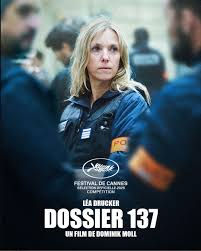Kanał
- Nicolò Roncone
- 26 mag
- Tempo di lettura: 2 min

Ruins, Death, Bullets, and Destruction. This is what the Nazi regime let the Polish people know during the Second World War, especially the brave people of the Warsaw resistance in 1944. Trapped inside a deadly military move by German troops, a young resistance group led by Commander Zadra (Wienczysław Glinski) is forced to retreat from the line through the drainage system of Warsaw. The canals and galleries soon became the labyrinth of death, where every passage or manhole could easily be controlled by the SS, ready to execute with no mercy every man and woman of the Polish resistance. Walking and wheezing between the galleries, the stink, and dead bodies by suffocation, every suffering human soul of resistance became something bigger, a symbol of hope, liberation, and freedom.
The love couple of Korab (Tadeusz Janczar) and Stokrotka (Teresa Iżewska) testify to us the bravery and recklessness of the Polish resistance, where the struggling force of Stokrotka became the symbol of the overwhelming strength of a war hero, of a freedom warrior, among the vapours and dark water of death. Wajda doesn’t spare the images of cruelty, sacrifice, and terror committed by the criminals of the SS in Warsaw; so the corpse columns and executions became a historic video document of what happened during that time, with the galleries turning into the cemetery of our characters, where this dirty black-and-white format can catch every hint of desperation, lack of breath, and decay.
The element that opens and closes the film is certainly light, a well-known symbol of hope, which here becomes a potential death trap, an enemy of escape and freedom, capable of dragging our protagonists directly toward certain death for their insurrection. Every source of light is thus transformed by Wajda into a potential danger, in a scenario where the logic of escape offers no certainties, only traps, despair, and death. But if the light is pure illusion, as testified by the tragic deaths of Korab and Stokrotka, what never fades is the tale of desperate heroism: in his final moments, Zadra once again descends into the infernal sewers in search of his comrades-in-arms, those who, trusting in his leadership, desperately tried to follow him through the deadly maze of the Warsaw sewers.
Conceived and produced within the context of communist Poland at the time, Wajda’s masterpiece is one of the most important works of historical memory in the post-war era; a tragic depiction of the horrors of war suffered by the Polish people and the desperate courage of its citizens—women, men, and young boys of the national resistance against Nazism. Without any propagandistic embellishment, it is a raw and realistic war testament that showcases the power of small European cinema in portraying the suffering and preserving the memory of something that has left an eternal mark on the collective consciousness.
by Nicolò Roncone




Commenti